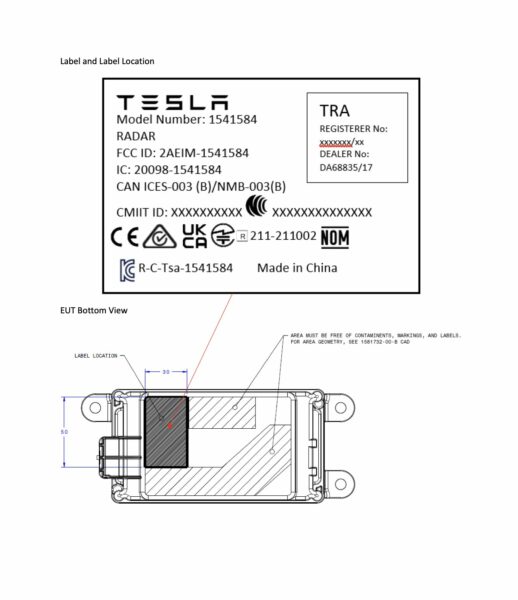
Tesla Registers High Resolution Radar Unit with FCC, Reveals Filing

Tesla has registered a new high-resolution radar unit with the Federal Communications Commission (FCC) in the U.S. (via @SawyerMerritt).
NEWS: Tesla has registered a new high resolution radar unit with the FCC, which would allow them to use it in vehicles sold in the US.
Source: @iamkellex, @greentheonly
Filing: https://t.co/yhCcqnR3H0 pic.twitter.com/TDbZ2hik8p
— Sawyer Merritt (@SawyerMerritt) June 7, 2022
The FCC filing was first spotted by @iamkellex and Tesla sleuth @greentheonly. This might mean that Tesla intends to bring radar back, at least to vehicles sold in the U.S.

Tesla originally used radar to guide Autopilot and Full Self-Driving, the company’s driver assistance feature and autonomous driving technology, respectively. However, the automaker ditched radar for an entirely camera-based system it dubbed ‘Tesla Vision’ last year.
Tesla Vision debuted in the Model 3 and Model Y in May 2021. The electric carmaker also transitioned all Model S and Model X units produced in North America to Tesla Vision starting in February 2022.
While Elon Musk has said on several occasions that he does not see radar as the future of autonomous driving technology, high-resolution radar is a bit different. In fact, Musk himself said back in February that high-resolution radar was actually “relevant.”
Only very high resolution radar is relevant
— Elon Musk (@elonmusk) February 5, 2022
As @greentheonly explained in a series of tweets, high-resolution radar offers all of the benefits of regular radar but at a higher resolution and a (potentially) higher frame rate, making it a viable alternative to a camera array.
— Sawyer Merritt (@SawyerMerritt) June 7, 2022
Radar is also kind of similar to lidar, in that it also relies on a beam to map out what is in front of it. While lidar shoots out a laser, though, the former uses a radar beam. Lidar has better accuracy and precision, thus allowing it to detect smaller objects. But high-resolution radar, said to be a factor in the path towards full autonomous driving, is able to sense environments at a wider field of vision and further down the road, even beyond 300 meters.
Tesla last month slightly increased the maximum speed of Vision-based Autopilot to 85 mph.

